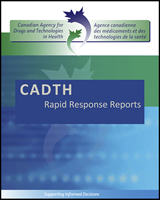| Space maintainer (SM) vs. none: |
|---|
Alnahwi11 2015
Observational
SM (mix of band and loop, lower lingual holding arch, transpalatal arch, and Nance holding appliance) vs. No SM |
|
Did not describe recruitment Did not account for confounding Grouped different appliances, which may have different treatment effects into one comparator; did not report the proportion of each SM type used Included patients who had SM applied years after primary second molar extraction Small sample size Single centre
|
Letti12 2013
Observational
Lingual arch appliance vs. No SM |
|
Did not describe recruitment Did not account for confounding Reported a study error in the outcome measurements; measurements were taken again and no significant differences were found (Student’s t test, p> 0.05) Results did not support conclusions Poor reporting overall Single centre
|
| Comparisons of different types of SM to each other: |
|---|
Setia7 2014
CCT
Band and loop vs. Band and custom loop vs. Ribbond vs. Super splint |
|
|
Nidhi8 2012
CCT
GFRCR vs. Band and loop (in different quadrants of mouth) |
|
Did not describe recruitment No indication that randomization occurred Statistical analysis may not be appropriate (used Chi-square instead of McNemar’s test); did not account for correlation No power calculation Small sample size Single centre
|
Subramaniam9 2008
CCT
GFRCR vs. Band and loop |
|
No indication that randomization occurred Did not describe recruitment No information on concealment of allocation No power calculation Small sample size Single centre
|
Arikan10 2007
Observational
Fixed appliance (band and loop) vs. removable appliance |
|
Did not describe recruitment Did not account for confounding Small sample size; further stratified into smaller groups (verbal vs. written health education; test vs. control teeth); made statistical comparisons even with such small sample sizes Single centre
|
| Comparisons of different types of SM to each other as well as to No SM: |
|---|
Rubin13 2012
Observational
Schwarz appliance vs. Lingual holding arch vs. Combination of two appliances vs. Control |
Prospective study Defined inclusion/exclusion criteria Defined outcomes Matched comparators based on age (although methods not described) Provided power calculation Statistical analysis controlled for some known confounders (i.e., age) Same investigator checked reliability of measurements made; noted high intraclass correlation coefficients (≥ 0.95) Large sample size Multi-centre study
|
Consecutively recruited patients, which may not provide a representative sample Potential for residual confounding Did not describe losses to follow-up Final time point for outcome measurement and statistical analysis varied among patients (“after treatment with the appliance and before fixed or orthodontic treatment in the permanent dentition” p. 147)
|
Owais6 2011
Quasi-RCT
LLHA 0.9 mm wire vs. LLHA 1.25 mm wire vs. No SM |
Defined inclusion/exclusion criteria Defined outcomes Assessed information bias: same examiner reassessed outcome measurements of 10 randomly chosen patients; coefficient of reliability was > 90% Provided numbers lost to follow-up Statistical analysis was appropriate; Bonferroni correction used for multiple comparison tests
|
No information on recruitment Quasi-random method of treatment assignment (alternation using odd and even numbers) No information on concealment of allocation No power calculation Small sample size Single centre
|

